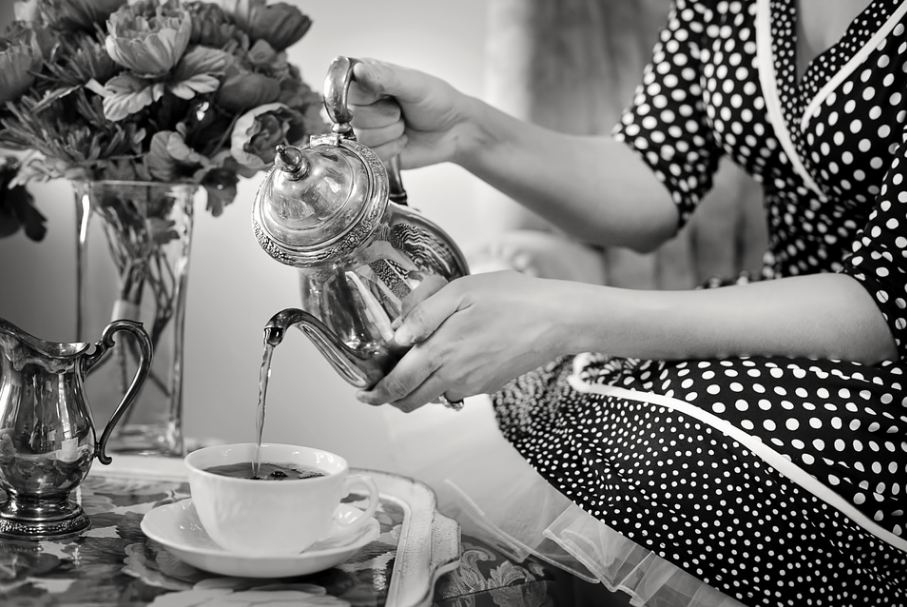THE AFTERNOON TEA AND ITS HISTORY
Although it is often mistaken as high tea, the afternoon is tea time with a meal served early in the evening in the working-class homes during the 18th and 19th centuries after a tiresome daywork.
On the ‘high’ or main dining table, British people enjoy the day’s main meal- a mug of tea, vegetables, bread, vegetables, cheese, and occasionally, meat.
THE FIRST AFTERNOON TEA
During the 1660s in Britain was the peak of sophistication of drinking tea as popularized by King Charles II and his Portuguese wife, Catherine de Braganza. But not everyone can drink tea as it came with a price: hefty price tags that only the aristocracy can afford. Until the mid-19th century, the concept of ‘afternoon tea’ first appeared.
The aristocratic family had that fashion of having only two meals a day: a considerable breakfast and evening meal and supplemented by a light lunch. However, the discovery of the kerosene lamp made the dinner eaten later in the evening.
The seventh Duchess of Bedford, Anna Russell, was in particular not happy about it and cannot wait for 9:30 pm to eat dinner. Describing that she is experiencing a “sinking feeling” around 4 pm, Anna started ordering a tray of a customary cup of Darjeeling tea, snacks like bread and butter, and cake to her room mid-afternoon. She also invited some of her friends to join her in the dressing room.
AFTERNOON TEA GETS ROYAL APPROVAL
Anna came to London and brought the occasion that soon became very popular after its royal endorsement. When Queen Victoria finds out about the activity, she instantly loved the idea. The Queen herself enjoyed having light cake with buttercream and fresh raspberries to accompany her precious spot of tea. Her favorite was later known as Victoria Sponge Cake. This was the birth of the tradition of Afternoon Tea.
By the late 19th century, high society ladies now dressed in floor-length gowns, adorning themselves with long gloves and elegant hats, gather in the drawing room as Afternoon Tea became quite the social affair. This time, tea time was no longer the ritual exclusive to the upper class, but it also spread to the middle class, and tea prices became more affordable.
As the ladies relaxed in the parlor chairs, tea would be served from stylish silver teapots into fine bone china cups, with elegant morsels carefully presented on low tables.
Back then, it was still an informal form of socialization as guests were invited verbally or thru notes. They could just drop in and out as they pleased.
TEA TIME ROYAL ETIQUETTE
Respect for a traditional service
The Queen doesn’t drink the tea herself. Therefore, respect for this traditional activity is very important. At tea time or in a tea party, appoint a hostess who will master the appropriate manners, and serve tea to the guests. This will avoid any mishaps related to overcrowding of people who serve themselves a second cup of tea simultaneously.
Following a specific order
The precise sequence in the preparation and serving of tea characterizes Royal etiquette. In drinking tea, it is essential to bring the cup to your mouth and not bend to reach it. Take note that milk or lemon should only be added to the tea at the very end once served.
Put back the cup on the plate after every sip, and don’t hold it constantly in your hands. Women must drink in the same place, especially when wearing lipstick so that the marks don’t scatter anywhere on the cup’s mouth.
According to the royal protocol, mixing the contents of the tea should be linear and not circular. No soaking of biscuits in the tea. It would not be worthy of Queen Elizabeth!
Holding the teacup
Your pinky should not stick out! Drink tea like a princess! When taking your teacup, use your thumb and forefinger to hold the top of the handle. Your middle finger will be the support to the bottom. And do not make any noise when putting the cup back on its plate.
No blowing on your cup to cool your tea
Unlike what people usually do with a hot choco or coffee, do not blow your cup of tea to cool it. Simply wait for a few minutes until you can handle its temperature and can drink it comfortably.

